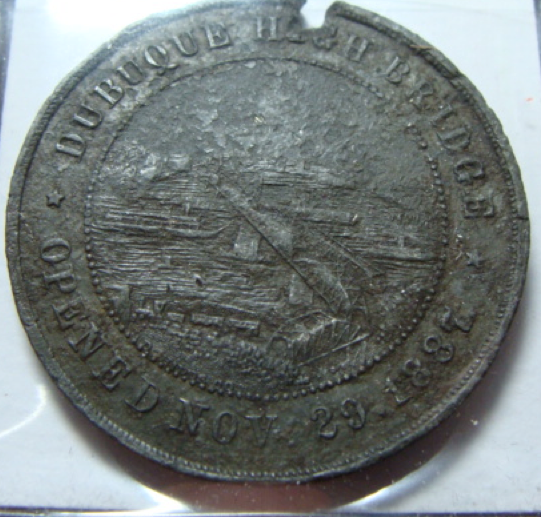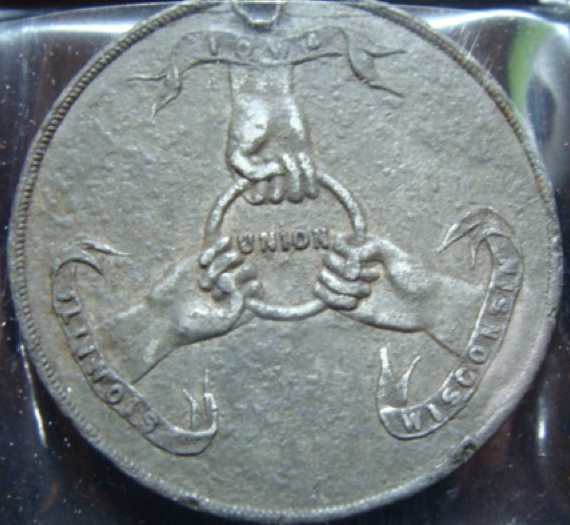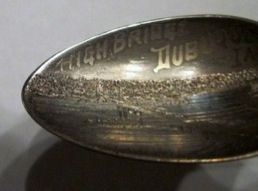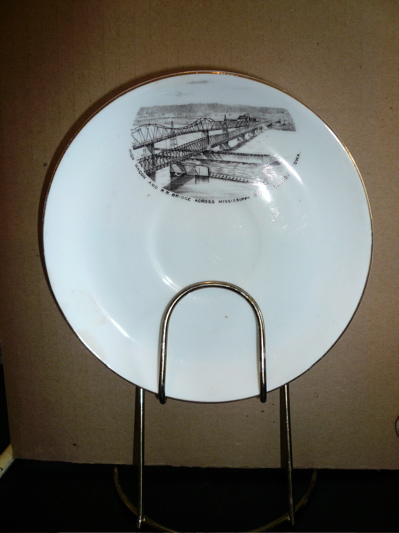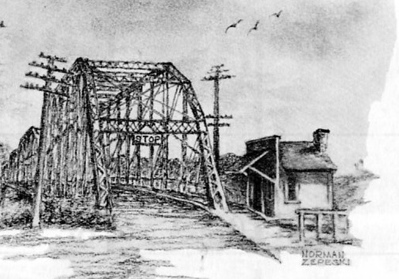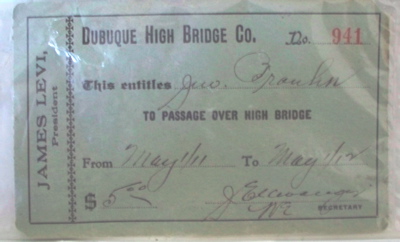Encyclopedia Dubuque
"Encyclopedia Dubuque is the online authority for all things Dubuque, written by the people who know the city best.”
Marshall Cohen—researcher and producer, CNN
Affiliated with the Local History Network of the State Historical Society of Iowa, and the Iowa Museum Association.
DUBUQUE WAGON BRIDGE
DUBUQUE WAGON BRIDGE. Construction of the RAILROAD BRIDGE increased interest in Dubuque for a passenger bridge which would span the MISSISSIPPI RIVER opening business with Illinois and Wisconsin. In January three kinds of crossings were considered for the river: (1) A pontoon bridge; (2) planks on the existing railroad bridge; (3)free ferry summer and winter by cable line.
The Dubuque High Bridge Company organized by Bernard J. O'Neill, president; John MacDonald, secretary; and A. Kammann, treasurer was formed in 1886. Bids for the construction of a bridge were advertised. Originally a PONTOON BRIDGE was suggested and the DUBUQUE PONTOON BRIDGE COMPANY was organized.
A fixed bridge, built in place of a PONTOON BRIDGE, was the concept of Mr. C. L. Strobel, a consulting engineer from Chicago, who had been hired to design a pontoon bridge between Dubuque and East Dubuque. Strobel suggested a high bridge would eliminate the need to build a draw through which boats could pass. The High Level Wagon Bridge or the "High Bridge" because it was constructed high enough to permit steamboats with tall smokestacks to pass underneath, would become the first highway link between Iowa and Illinois.
In 1886 the idea of a pontoon bridge was abandoned and a high bridge became very popular; this was after the city had passed an ordinance appropriating $25,000 for a pontoon bridge. (1) The Dubuque City Council appropriated the $25,000 toward the high bridge and the citizens raised about $75,000 by subscription by the middle of October. In August, 1886, the construction of the high bridge was awarded to Horace E. Horton, of Rochester, Minnesota, at $122,994; his was the lowest bid by over $20,000; the bridge was to be completed by May 1, 1887. This sum included the iron approach on the east side. (2)
H. E. Horton, of the H. B. Horton Bridge Company (later the Chicago Bridge and Iron Works) who had been hired to build the pontoon bridge, immediately urged the acceptance of the new plans saying that such a bridge could be constructed for about $120,000. This compared with the cost of $80,000 for a pontoon bridge.
Work on the bridge began on September 7, 1886. On March 23, 1887, the first shipment of iron for the high bridge arrived. (3) Almost immediately there was a rumor that the federal government would stop construction because the company had failed to apply to Congress for permission to build the bridge. Further investigation revealed that the government would not be able to stop construction because the bridge did not hinder navigation. Further, government engineers had approved of the plans submitted by the bridge company.
On November 25, 1887 teams began to cross the high bridge. The roadway was eighteen feet wide, with a foot path on each side. Two carriages containing bridge and city officials made the first trip. On the 29th the event was celebrated ; an immense procession passed through the streets and over the bridge; there were floats, banners, mottoes, bands and societies in line, all escorted by the GOVERNOR'S GREYS and accompanied by bands and drum corps. To commemorate the event, the bridge company had thousands of bronze medals cast. Every person in the crowd that day received one the medals shown in the pictures above.
The bridge replaced several FERRYBOATS that began service across the MISSISSIPPI RIVER in 1827, six years before the permanent settlement of Dubuque as a community. The bridge remained privately owned despite occasional interest in either the city or state to make it a free bridge. The bridge was taken down shortly after the completion of the JULIEN DUBUQUE BRIDGE.
---
Source:
Oldt, Franklin T. History of Dubuque County. http://www.ebooksread.com/authors-eng/franklin-t-oldt/history-of-dubuque-county-iowa-being-a-general-survey-of-dubuque-county-histor-tdl/page-21-history-of-dubuque-county-iowa-being-a-general-survey-of-dubuque-county-histor-tdl.shtml
(Photo Courtesy: http://www.dubuquepostcards.com)



